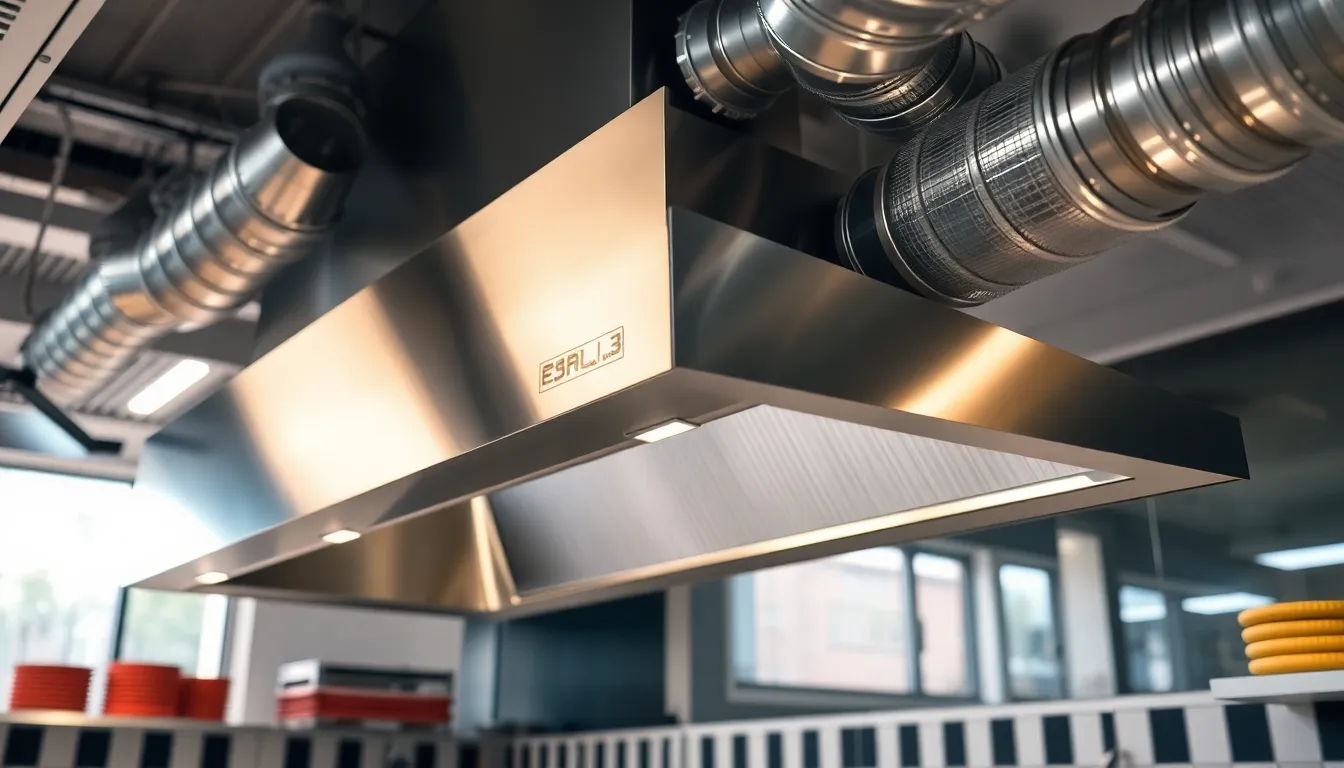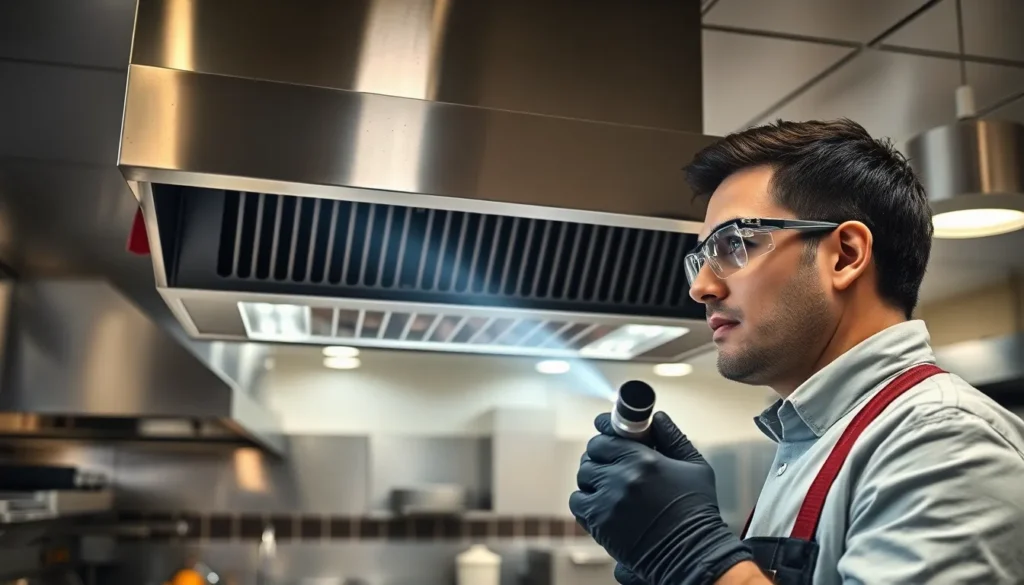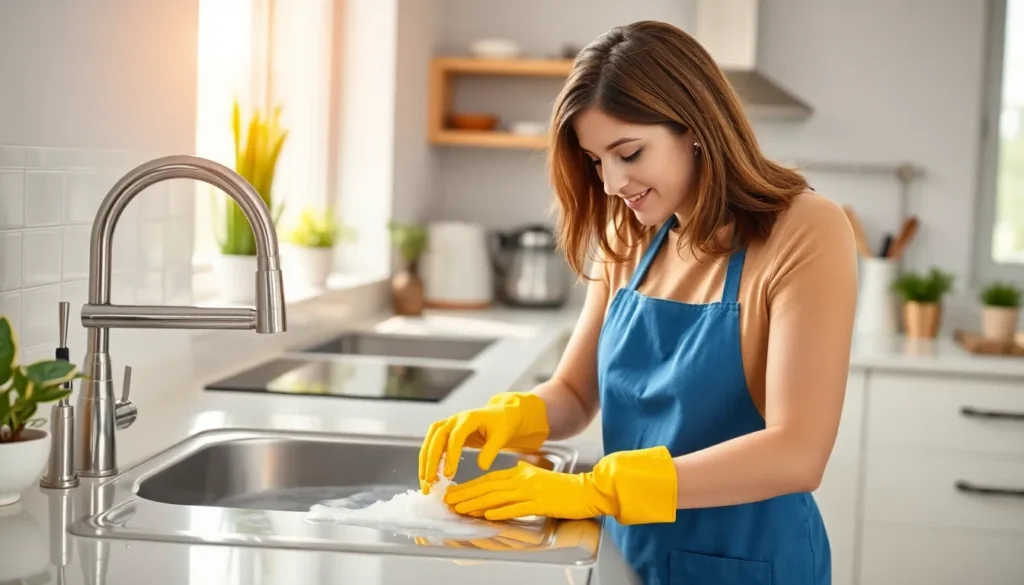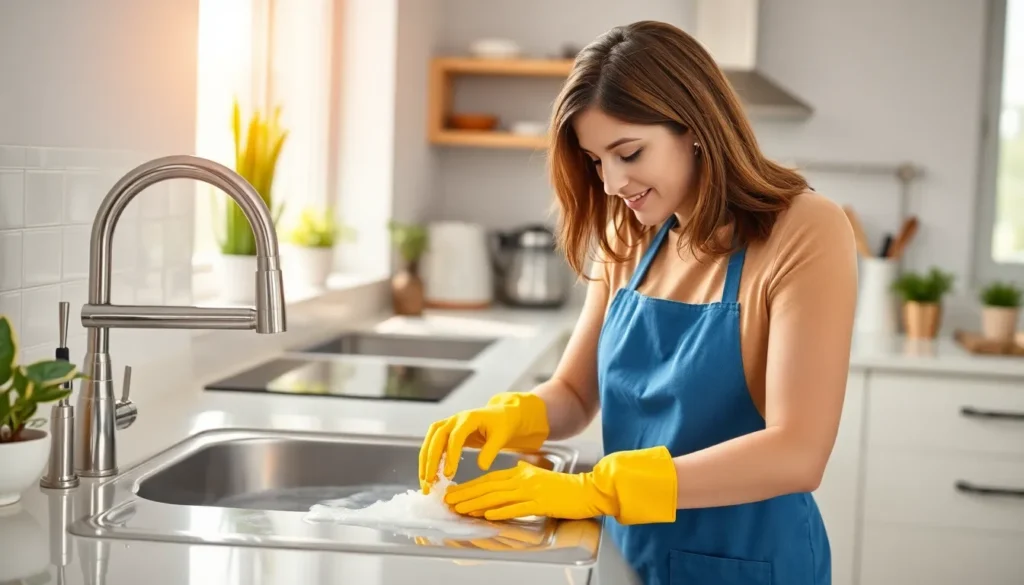Table of Contents
ToggleIn the bustling world of commercial kitchens, where culinary magic happens, there’s a hidden villain lurking above the fryers and grills: grease. It builds up in exhaust systems, creating not just a fire hazard but also a smelly atmosphere that could turn even the most dedicated food lover away. Who wants to dine where the air smells like last week’s fish special?
Importance Of Commercial Kitchen Exhaust Cleaning
Commercial kitchen exhaust cleaning plays a vital role in maintaining a safe and pleasant environment. Effective cleaning helps mitigate health risks and safety concerns associated with grease buildup.
Health And Safety Compliance
Meeting health and safety standards depends on regular exhaust system maintenance. Touchpoints include local health regulations, which often mandate frequent cleanings. Neglecting these requirements can lead to significant fines and potential shutdowns. Clean exhaust systems promote better air quality, reducing the risk of respiratory issues among staff and patrons. Consistent cleaning ensures that kitchens adhere to food safety protocols, creating a hygienic environment that enhances customer satisfaction.
Preventing Fire Hazards
Exhaust cleaning drastically reduces the risk of fire hazards. Grease buildup in ductwork poses a serious threat, potentially igniting under high temperatures. Statistics indicate that commercial kitchens experience an average of 7,000 grease-related fires annually. Maintaining clean exhaust systems prevents flammable residue accumulation, fostering a safer working environment. Additionally, insurance policies often require proof of cleaning to remain valid. Implementing regular cleaning schedules can mitigate these risks significantly and protect investments in equipment and facilities.
Components Of The Exhaust System

The exhaust system in a commercial kitchen comprises several key components, each playing a vital role in maintaining air quality and safety.
Hoods
Hoods act as the foremost barrier against grease and smoke. They capture vapors produced during cooking, preventing them from dispersing into the kitchen environment. Stainless steel construction helps ensure durability and ease of cleaning. Regular maintenance keeps hoods functioning efficiently, reducing fire hazards and maintaining air quality. An effective hood system also aids in compliance with health regulations, which often mandate specific ventilation standards.
Ducts
Ducts transport captured air away from the kitchen. Properly designed ducts minimize airflow resistance, significantly enhancing system efficiency. Fire safety measures mandate that these ducts remain clear of grease buildup. Regular inspection and cleaning are essential to prevent blockages and reduce the risk of fire. Additionally, ducts should conform to local building codes to ensure compliance and safety.
Fans
Fans facilitate the movement of air through the exhaust system. They draw contaminated air and push it through the ducts efficiently. Types of fans include inline and rooftop, both serving distinct purposes within a kitchen. Choosing high-quality fans ensures optimal performance and longevity. Maintenance also involves cleaning fan blades to eliminate grease accumulation, which enhances their airflow capacity and reliability.
Cleaning Process
The cleaning process for commercial kitchen exhaust systems involves several crucial steps. Each step ensures safety and effectiveness in removing harmful grease buildup.
Initial Inspection
Inspecting the exhaust system marks the starting point of the cleaning process. Technicians evaluate the hood, ducts, and fans to identify areas with significant grease accumulation. They also check for signs of damage or wear that could impact ventilation efficiency. Measurements of grease thickness provide essential data for determining cleaning methods and frequency requirements. A thorough initial inspection lays the foundation for an effective cleaning strategy and compliance adherence.
Safer Cleaning Techniques
Utilizing safe cleaning techniques is vital for protecting equipment and personnel. Technicians often employ biodegradable cleaning agents to minimize environmental impact while effectively removing grease. Pressure washers and steam cleaners efficiently eliminate stubborn residues without damaging surfaces. Automated cleaning systems can also ensure thorough coverage in hard-to-reach areas. Proper personal protective equipment, such as gloves and masks, enhances safety for workers throughout the cleaning process.
Post-Cleaning Maintenance
Implementing post-cleaning maintenance helps sustain hygiene and efficiency. Scheduling routine inspections ensures ongoing compliance with health and safety regulations. Staff should regularly check for grease buildup and assess ventilation performance. Training kitchen personnel on best practices for grease management can further reduce accumulation. Establishing a clear maintenance plan supports long-term air quality and safety in commercial kitchens.
Choosing A Professional Service
Selecting a professional service for kitchen exhaust cleaning involves careful consideration of qualifications, certifications, and cost aspects. These factors ensure safe and effective cleaning.
Qualifications And Certifications
Look for companies that hold recognized certifications in kitchen exhaust cleaning. Specific certifications such as NFPA 96 compliance indicate adherence to safety standards. Check for technician qualifications, including training in grease removal techniques and safety protocols. Experienced professionals understand the complexities of commercial kitchen environments. Verified references can also highlight previous successful cleanings, emphasizing customer satisfaction. Confirming insurance coverage protects against potential damages during the cleaning process. Reliable services should readily provide proof of credentials upon request.
Cost Considerations
Evaluate pricing structures when choosing a cleaning service. Estimates typically depend on the size and complexity of the exhaust system. The average cost for exhaust cleaning can range between $300 and $1,500, with larger kitchens generally incurring higher fees. Understanding what’s included in the service is critical, as some companies might add charges for additional services. Regular cleaning contracts often come with discounts, making them cost-effective over time. Budgeting for these expenses upfront ensures compliance with regulations and helps mitigate health and safety risks in commercial kitchens.
Maintaining a clean commercial kitchen exhaust system is vital for safety and customer satisfaction. Regular cleaning not only minimizes fire hazards but also enhances air quality and compliance with health regulations. Investing in professional cleaning services ensures that kitchens remain hygienic and efficient while protecting valuable equipment and facilities. By prioritizing exhaust cleaning, restaurant owners can create a welcoming atmosphere that keeps customers coming back. Embracing a proactive approach to maintenance ultimately safeguards the business and its reputation in the competitive culinary landscape.




